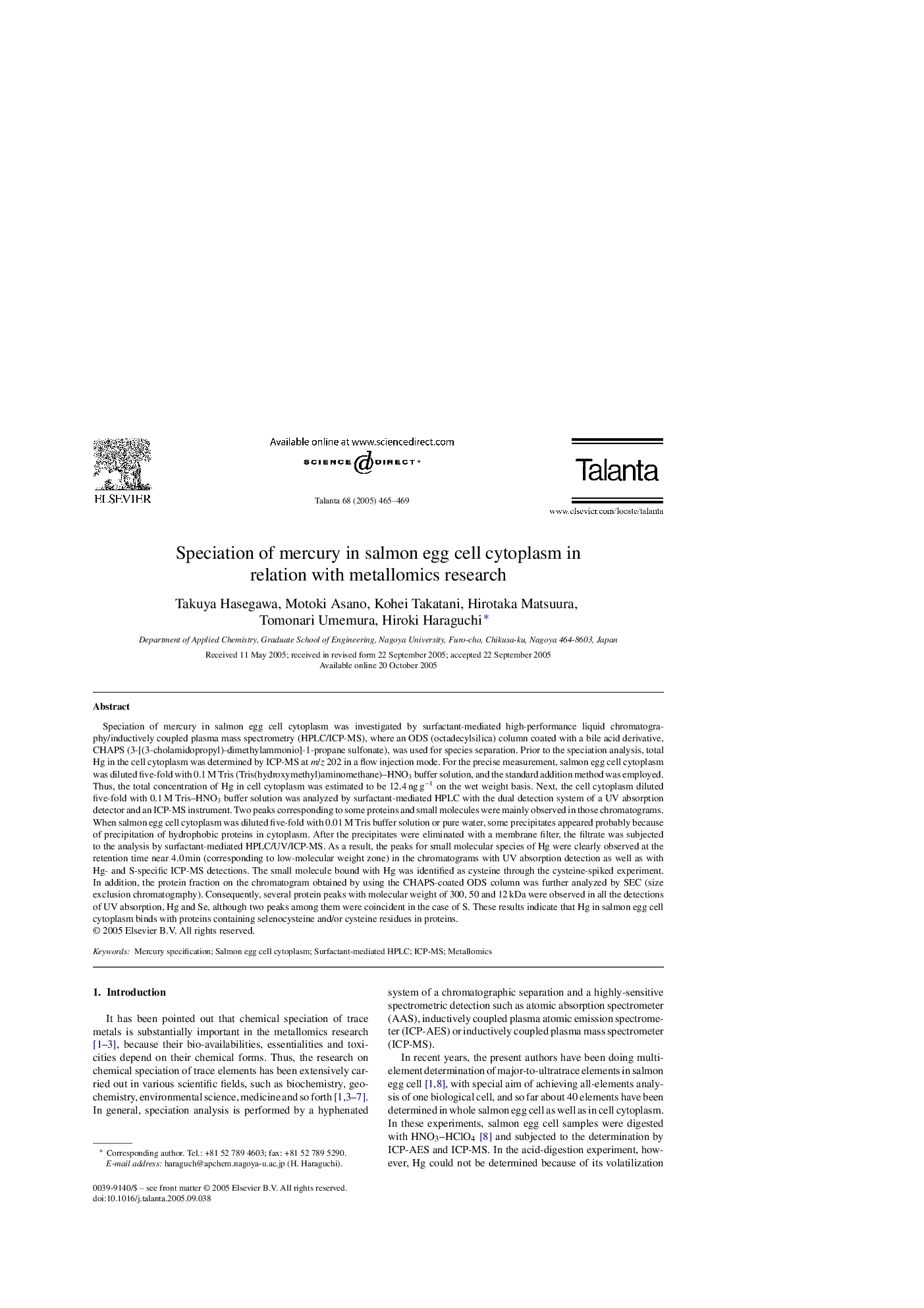| Article ID | Journal | Published Year | Pages | File Type |
|---|---|---|---|---|
| 10561045 | Talanta | 2005 | 5 Pages |
Abstract
Speciation of mercury in salmon egg cell cytoplasm was investigated by surfactant-mediated high-performance liquid chromatography/inductively coupled plasma mass spectrometry (HPLC/ICP-MS), where an ODS (octadecylsilica) column coated with a bile acid derivative, CHAPS (3-[(3-cholamidopropyl)-dimethylammonio]-1-propane sulfonate), was used for species separation. Prior to the speciation analysis, total Hg in the cell cytoplasm was determined by ICP-MS at m/z 202 in a flow injection mode. For the precise measurement, salmon egg cell cytoplasm was diluted five-fold with 0.1 M Tris (Tris(hydroxymethyl)aminomethane)-HNO3 buffer solution, and the standard addition method was employed. Thus, the total concentration of Hg in cell cytoplasm was estimated to be 12.4 ng gâ1 on the wet weight basis. Next, the cell cytoplasm diluted five-fold with 0.1 M Tris-HNO3 buffer solution was analyzed by surfactant-mediated HPLC with the dual detection system of a UV absorption detector and an ICP-MS instrument. Two peaks corresponding to some proteins and small molecules were mainly observed in those chromatograms. When salmon egg cell cytoplasm was diluted five-fold with 0.01 M Tris buffer solution or pure water, some precipitates appeared probably because of precipitation of hydrophobic proteins in cytoplasm. After the precipitates were eliminated with a membrane filter, the filtrate was subjected to the analysis by surfactant-mediated HPLC/UV/ICP-MS. As a result, the peaks for small molecular species of Hg were clearly observed at the retention time near 4.0 min (corresponding to low-molecular weight zone) in the chromatograms with UV absorption detection as well as with Hg- and S-specific ICP-MS detections. The small molecule bound with Hg was identified as cysteine through the cysteine-spiked experiment. In addition, the protein fraction on the chromatogram obtained by using the CHAPS-coated ODS column was further analyzed by SEC (size exclusion chromatography). Consequently, several protein peaks with molecular weight of 300, 50 and 12 kDa were observed in all the detections of UV absorption, Hg and Se, although two peaks among them were coincident in the case of S. These results indicate that Hg in salmon egg cell cytoplasm binds with proteins containing selenocysteine and/or cysteine residues in proteins.
Keywords
Related Topics
Physical Sciences and Engineering
Chemistry
Analytical Chemistry
Authors
Takuya Hasegawa, Motoki Asano, Kohei Takatani, Hirotaka Matsuura, Tomonari Umemura, Hiroki Haraguchi,
